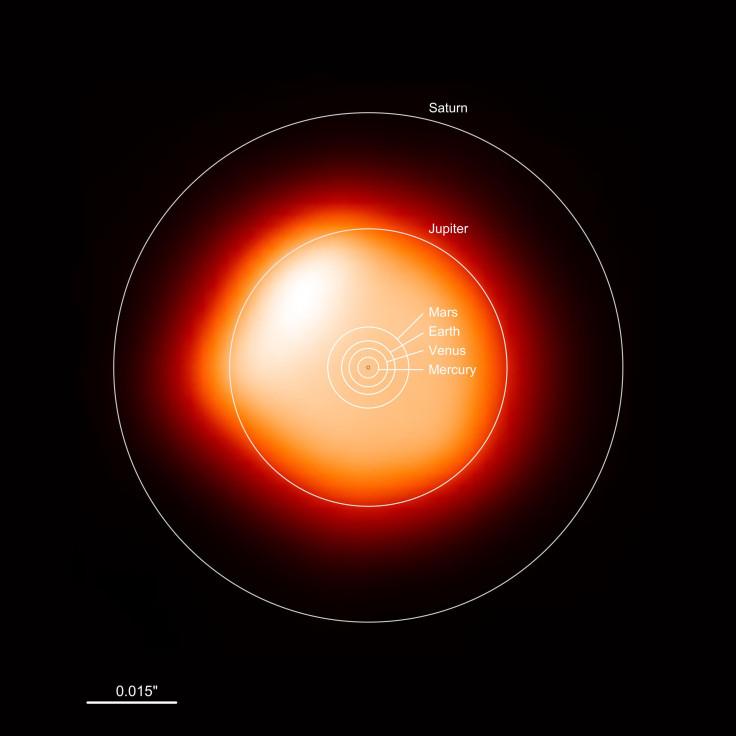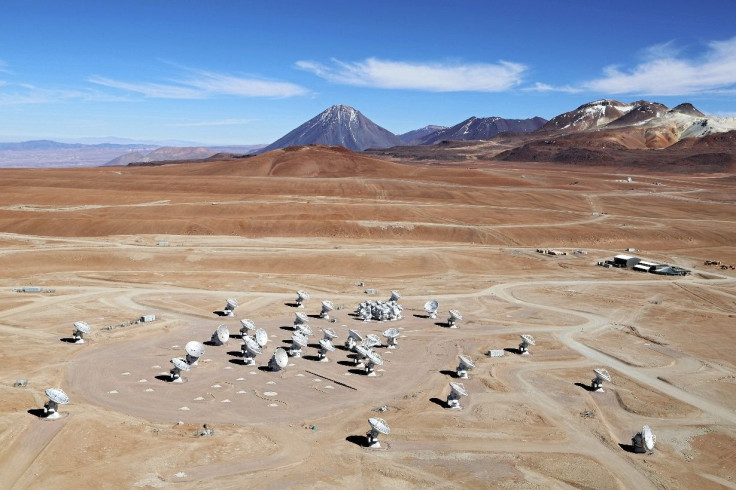Picture Of Orion Constellation Star Betelgeuse Most Detailed Ever

Astronomers say they have snapped one of the most detailed images of a star to date, training the largest radio telescope in the world on Betelgeuse in the constellation Orion.
The Dublin Institute for Advanced Studies said with the exception of images of the sun, this one is “the most detailed image of the surface of a star that has ever been created at radio wavelengths.” They say the closeup view tells them about the star’s temperature and thus about how stars form in general.
Read: Scientists Watch a Star Become a Black Hole, But They Were Expecting a Supernova
Betelgeuse is a supergiant red star a few hundred light years away and makes one of the shoulders of the constellation of the mighty hunter Orion (Earth viewers’ left, Orion’s right shoulder). The enormous red star is approaching the end of its life and one day will explode in a supernova, perhaps within the next few hundred thousand years.
The astronomers used ALMA to get a closer look at Betelgeuse. ALMA is the Atacama Large Millimeter/submillimeter Array in the desert of northern Chile, an observatory that is part of an international partnership through groups like the European Southern Observatory and the U.S. National Science Foundation, among others. It consists of a huge telescope that is supported by dozens of antennas. The high altitude and dry air of the Atacama Desert give scientists an advantage in viewing outer space.
The researchers said the image shows the temperature of Betelgeuse’s inner atmosphere fluctuates, with some spots hotter than others.
“We have known for decades that the visible surface of Betelgeuse is not uniform, but ALMA has now shown in beautiful detail that the temperature in its inner atmosphere is also not uniform,” researcher Eamon O’Gorman said in the DIAS statement. “It looks like these temperature fluctuations could be caused by magnetic fields, similar to what we see on the sun, our nearest star.”
Although Betelgeuse has this in common with our sun, it is different in many other ways. One of the most notable differences is how large Betelgeuse is — if the sun were at its center, it would extend all the way out past Jupiter’s orbital plane.
Read: Star Collision Creates Something Colder Than Space Itself
Much like the sun shoots out gas and particles in a solar wind that can reach Earth and the other planets in our solar system, Betelgeuse is also expelling matter into space. DIAS explained its ejected material includes heavy elements that will one day help form new stars and planets.
“When we look at the night sky with our naked eyes, we see bright stars everywhere, but because they are so small, even the most powerful telescopes in the world struggle to image their surfaces,” researcher Pierre Kervella said. “Our results show ALMA has the capability to image the surfaces of the largest stars in detail.”

© Copyright IBTimes 2024. All rights reserved.





















